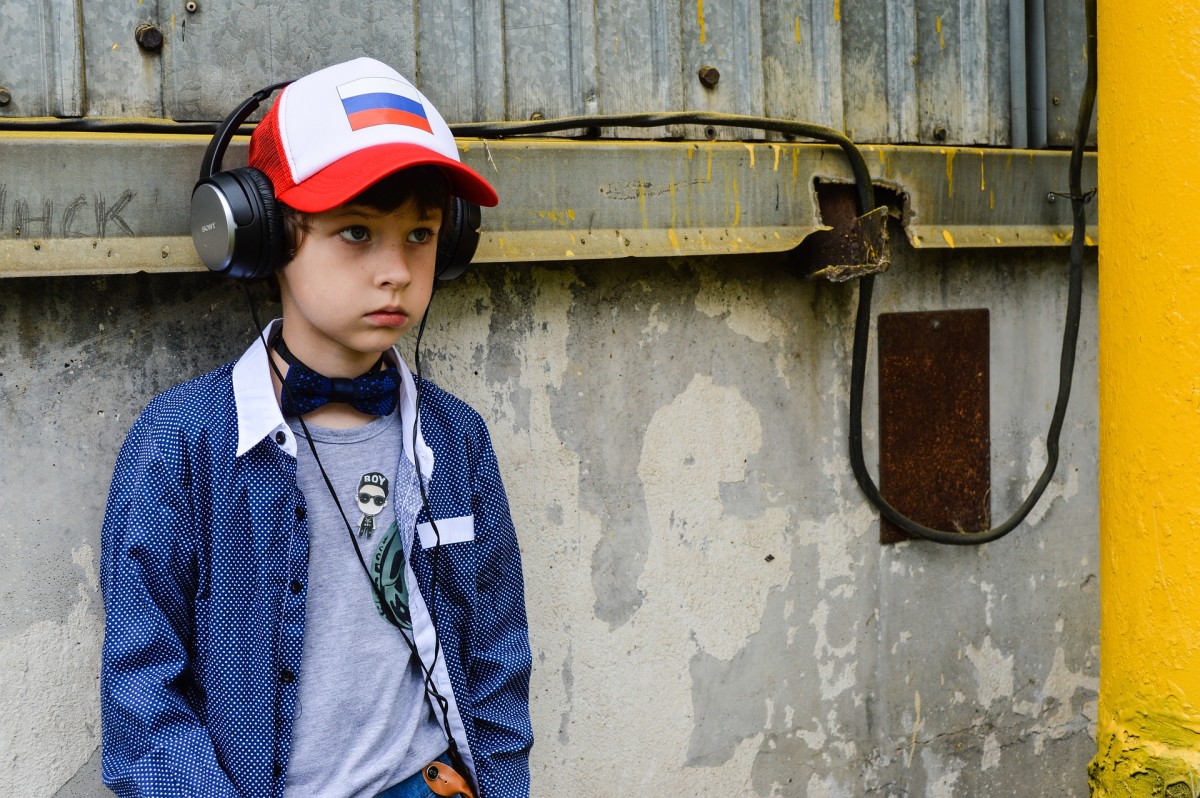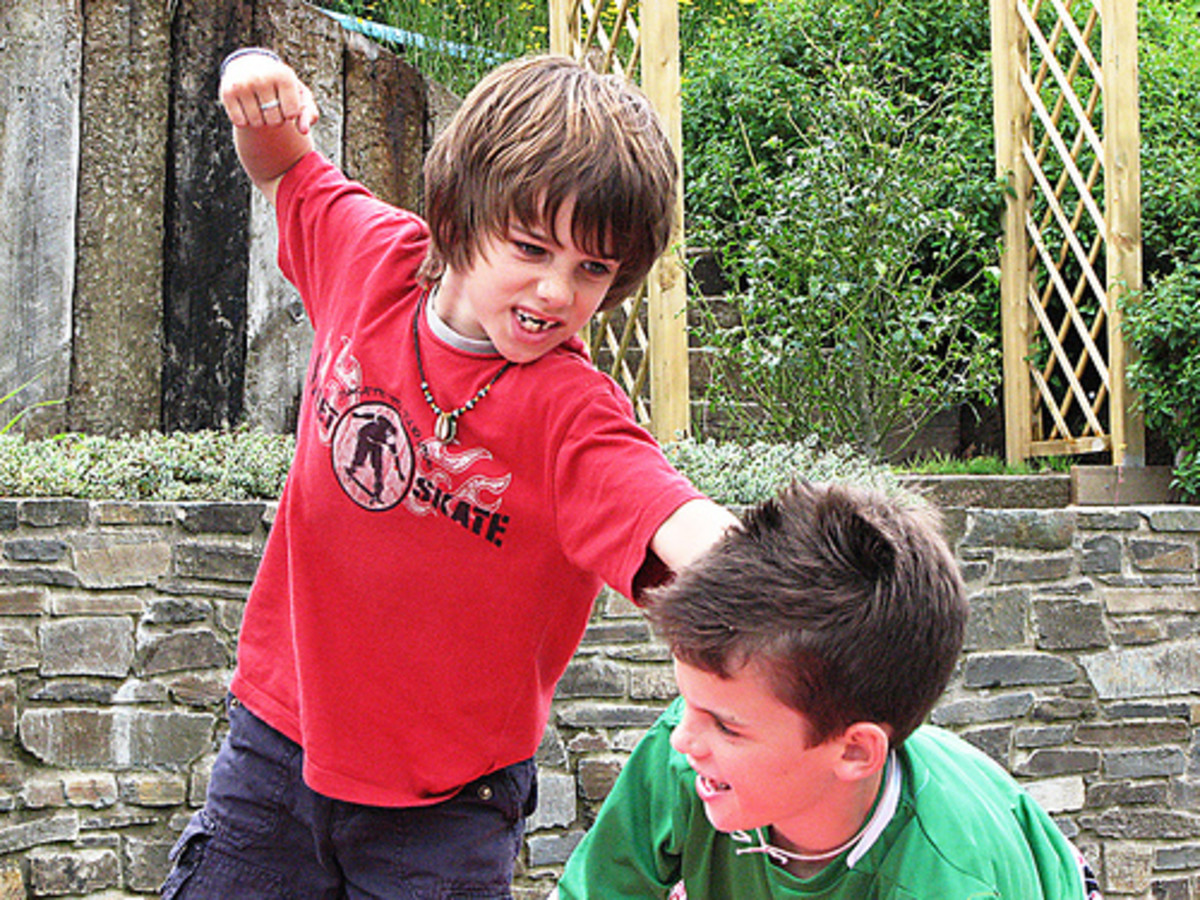How To Do Time-Out With Your Children
Time-out is a very useful discipline technique. Many parents think that time-out doesn't work but that is probably because they're not doing it right. There is a very specific way that it must be done in order for it to work. Time-out is an effective way to let your child know they have done something wrong and gives them a chance to calm down if they are upset.
Time-out works best if it's something that you do right from the start but don't worry if you've got a three year old and you've never done time-out before. If you are starting out a little late then you will meet resistance from your child. Don't give up, eventually time-out will be something that you can use to easily discipline your kids. There are six steps to an effective time out. At the end of explaining each step I will show you an example using a child named John.
Step 1: Warning
The first step to a time-out is the warning. Don't put your kid in time-out the instant they do something wrong first warn them. Use a firm voice to let them know that you mean business. Also make sure that your child knows what's going to happen. Don't just tell them to do or stop doing something, give them a consequence. Make sure they know what will happen if they continue with the bad behaviour. Giving your child a warning gives them a chance to stop what they are doing. Here's the example with John showing a good warning:
- Say your child John is hitting his younger sister. Say to him in a firm voice: "John, if you hit your sister again then you will go into time-out."
Step 2: Put Your Child Time-Out
If you warn your child and they continue with the bad behaviour then put them in your chosen time-out spot. Have a specific spot that you put them in for time-out where. Where this is, is up to you; I always use the third step on the stairs or a corner in a room. Make sure that you do actually put your child into time-out, do not give them another warning. If you've told your kid that they will go into time-out if they continue with the bad behaviour then you must follow through on that. If you don't then that child will know that you're making empty threats and they will see no reason to stop what they are doing. Once your child in in the time-out spot, tell them why they are in time-out. Explain to them what they did wrong and that the behaviour is unacceptable.
It should be noted that if you cannot do a time-out immediately for whatever reason then you should do so at the first opportunity. If you are out and your kid starts to act up still give them a warning and if they don't do as you say then put them into time-out as soon as you get home. You must make sure that you always follow through with your warnings, soon your child will know that you mean business and can't be walked over.
- After the warning John hits his sister again. Immediately pick him up and put him in his time-out spot. Once he's there say to him: "You are going into time-out because you continued to hit your sister when I asked you to stop. This is unacceptable and I want you to sit and think about what you've done.
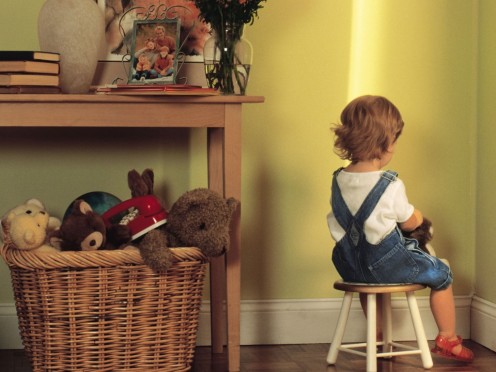
Step 3: Set The Timer
How you determine how long your child is in for time-out should be done by there age. For every year they get a minute in time-out, so a three year old would get three minutes, a four year old four minutes and so on. Once you're child is in time-out set the timer for how ever long and then leave them. While the timer is going don't say a word to them. Even if your kid is screaming and crying and kicking the wall, do not say anything to them. Make them understand that bad behaviour doesn't get rewarded with attention.
If you child gets up and moves out of the time-out area pick them up, put them back into time-out and reset the timer; do not say anything to them, This can be very frustrating for the parent as sometimes you have to put the child back 10, 20, 30 times before they eventually stay put. Even though you can be at it for a long time to complete the time-out don't give in to your kid. They are trying to test you and see how far they need to push you before you give in; show them that you won't cave. I'll use the example with John again to show you what to do in this situation.
- You've put John into time-out and set the timer for three minutes since he is three years old. John keeps leaving the time-out and running around the house laughing. Every time he leaves you pick him up and put in back into time out and restart the three minutes. You don't say anything to him even though he is screaming and trying to kick you. When you feel yourself wanting to give up, you take a deep breath and slowly count to ten and then continue with the time-out. Eventually John does his three minutes.
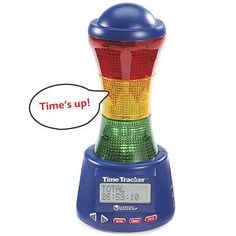
How Many Parents Use Time-Out?
Do you use time-out as a punishment?
Step 4: Tell The Child What They Did Wrong And Have Them Apologize
Once the your child has sat in time out for the duration of the timer go and explain again why they were put into time-out. Just punishing your child won't change their behaviour since they need to understand why they were punished. When your sure that your child understands why their behaviour is unacceptable, have them apologize for it. Make sure that it is a sincere apology, if your child screams "SORRY!!" in your face then that isn't a sincere apology. If this does happen, or if your child point blank refuses to say sorry, then restart the timer. To make sure that your child understands what they did wrong they must apologize,if they don't say sorry then that means that they don't think there was a problem with their behaviour. A sincere apology means your child knows what they did was bad and they are sorry for it. That doesn't mean they won't ever do it again but eventually your kid will realize that a certain behaviour always results in a time-out and so they stop that behaviour.
- John's three minutes are up and so you go up to him, get down to his level and in a calm but firm voice say "I put you into time-out because you hit your sister and kept hitting her even after I asked you to stop. You know that hitting people is wrong so I want you to sorry to me." John screams that he's sorry but since it isn't a sincere apology you reset the timer for three minutes. Another three minutes gives John a chance to calm down and this time he gives you a proper apology.

Step 5: Hugs And Kisses
Once your child has done their time-out and given you a good apology give them a hug and kiss to let them know that they are forgiven. This step may not seem important but in reality it is very important to making time-out an effective punishment. If you don't let your child know that they are forgiven, then feelings of guilt and resentment can build up which may seriously impact your relationship in the future. Forgiveness is key to maintaining a healthy relationship with your child. There really isn't a reason as to why you shouldn't forgive your child, they're just a kid and kids make mistakes. So long as they are told that what they did was wrong and they do their punishment then they should be told that they are forgiven. A Lack of forgiveness or a child not knowing that they are forgiven is probably one of the biggest cause of tension in your child's teen years since there is resentment from you which can lead to anger towards your child and feelings of guilt from your child which can lead to them becoming depressed.
- Once John has done his time-out and said sorry you give him and big hug and a kiss and tell him that it's okay and that you forgive him. John knows what he did was wrong and he accepted his punishment; although he will probably hit his sister again you understand that he is just a child and will make many mistakes before his is grown.
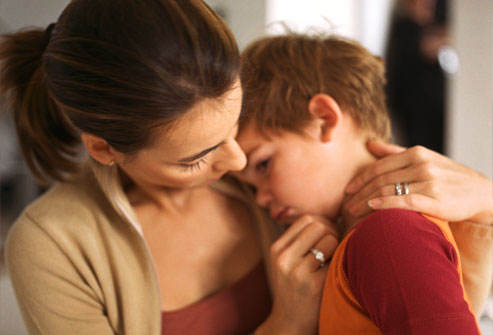
Step 6: Forget About What Happened And Move On To Something Else
This is the last time to an effective time-out. Once you've given your child hugs and kisses then go back to whatever it was that your kid was doing before they misbehaved. Do NOT continue to lecture your child about what they did. Although it may be tempting to keep telling your child why they're behaviour was bad this is extremely counter-productive. You may think that the more you lecture your child the less likely they are to repeat their actions but this is not the case. Young children have a very short attention span and so they will soon stop listening to you. They may also develop a reluctance to tell you things since they don't want to be shouted at for half an hour. This can become a big problem when your children are older since they might not come to you if they've got a issue which makes you less able to help them.
It is important to note that if your child doesn't want to do what they were doing before and would prefer to be alone for a while or even stay in time-out (believe it or not I have had kids choose to stay in time-out because they want to think more about what they did and make sure that they are calm), then let them do that. Forcing your child to go back to play time or whatever when they want to sit quietly will most likely backfire and cause them to misbehave even more.
- John has completed with his time-out and he knows that he has been forgiven for his actions. You take him by the hand and say "lets go back and play with nicely your sister now that you've done your time-out". John sits on the floor with his sister and plays with her with some blocks. He doesn't hit her even when she knocks down his tower.
This Is A Video From "Supernanny" Showing How To Do A Time-Out
Don't Give Up If It Doesn't Work Right Away
It may take a while for time-out to become an effective punishment and it certainly doesn't stop all bad behaviour, but eventually the phrase "if you do that again then you will go into time-out" will become something that your child does listen to. The important thing to remember is that time-out isn't a miracle cure to bad behaviour and it isn't instant. You can't expect your young child to fully understand and willingly do a time-out the very first time you do it; but if you follow through and stick with it then they will eventually understand. In fact, I've seen children put themselves in time-out when they do something wrong because they know that is what happens when they are naughty.
Although it can be tempting when you are angry to scream and shout at your child, that will not help in the long run. If you show angry behaviour then your child will also become angry. If you remain calm then they are more likely to be calm.
Stick with it, follow through every time, remain calm, and ask for help if you need it and time-out will become something that both you and your child will greatly benefit from.

